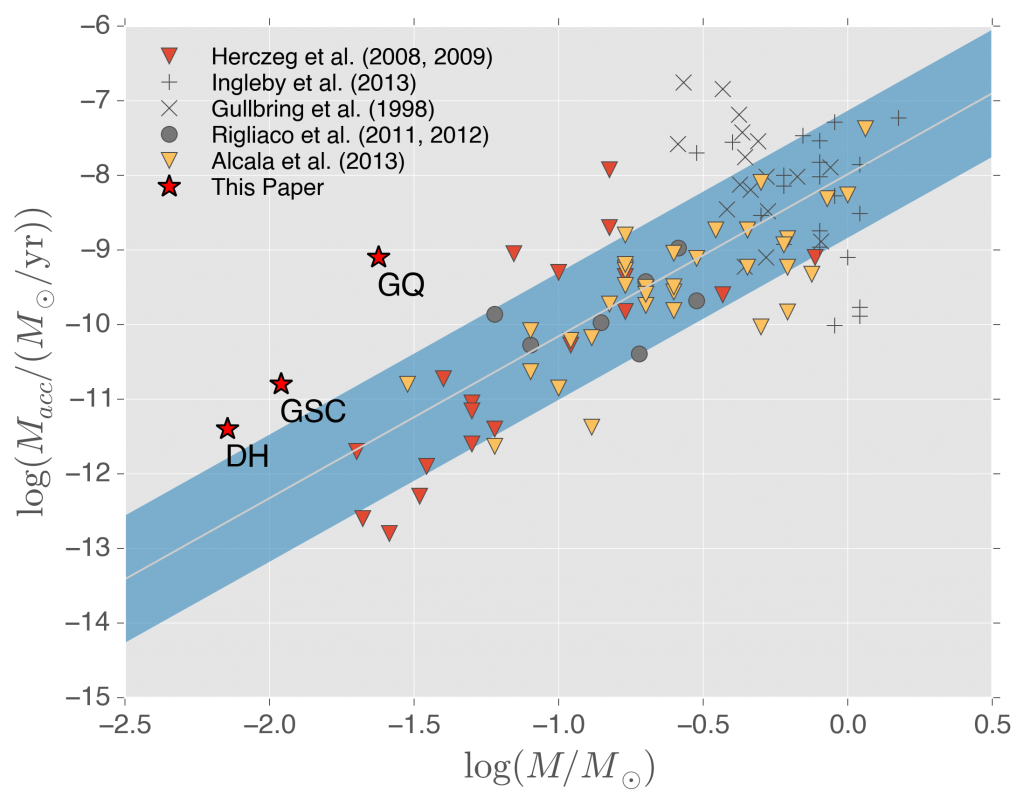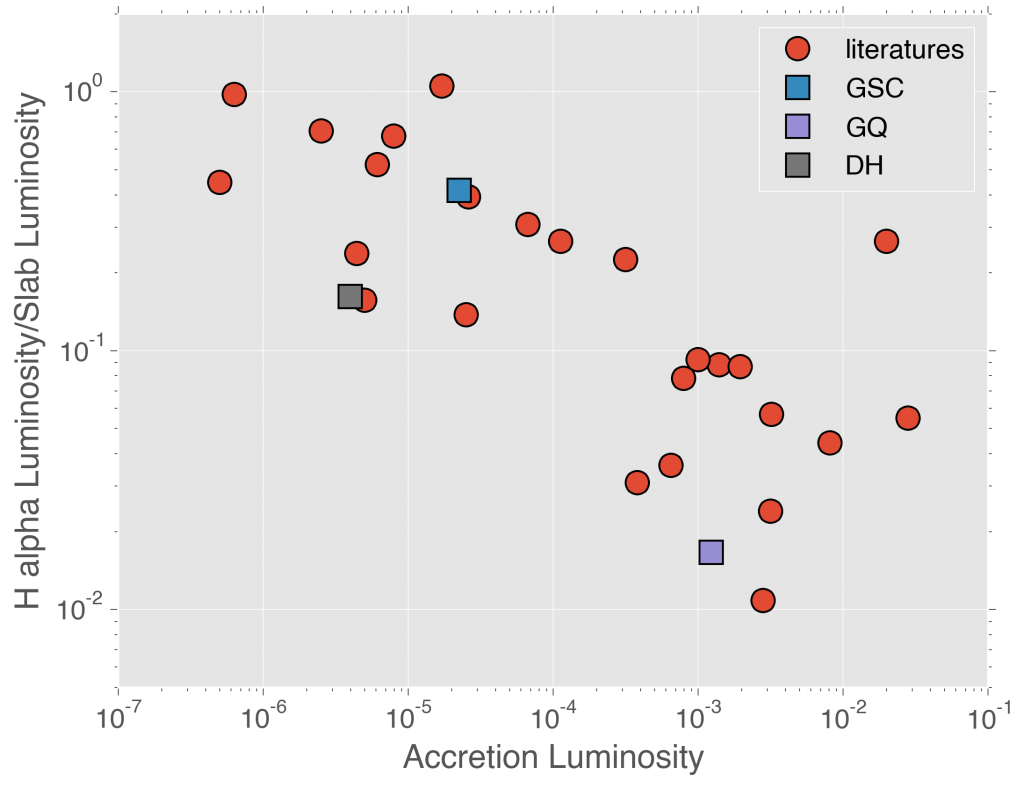There is quite a debate whether many direct imaged low mass companions (mass ~ 15 to 30 jupiter masses) should be called planets or brown dwarfs. The most convincing criterion is the formation mechanism, — whether they are formed by a planet-like core accretion process or star-like gravitational instability mechanism. To answer this question, we took multi-band HST/UVIS photometry to three accreting planetary mass companions, GSC6214-210 B, GQ Lup B, and DH Tau B. The accretion rates were converted from accretion luminosities that were measured from the UV excess emission. Our result was published on ApJ Letter ( 2014ApJ…783L..17Z)
As shown in Figure 1, the accretion rates of our three targets are more than one order of magnitude higher than the extrapolation of accretion rate – mass relationship of low mass star. This result indicates that there are massive disks surrounding these young planetary mass objects.
Stamatellos et. al. suggested the high accretion rates of these substellar objects can be fitted in disk fragmentation scenario.
These objects demonstrate enormous H alpha emissions in their SEDs. We suggested that search for H alpha emission could be an efficient way to find accreting planetary mass companions.


